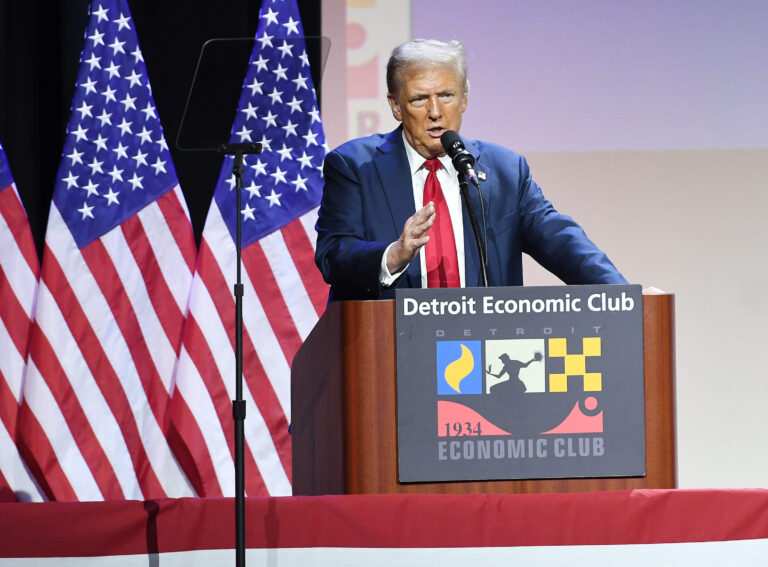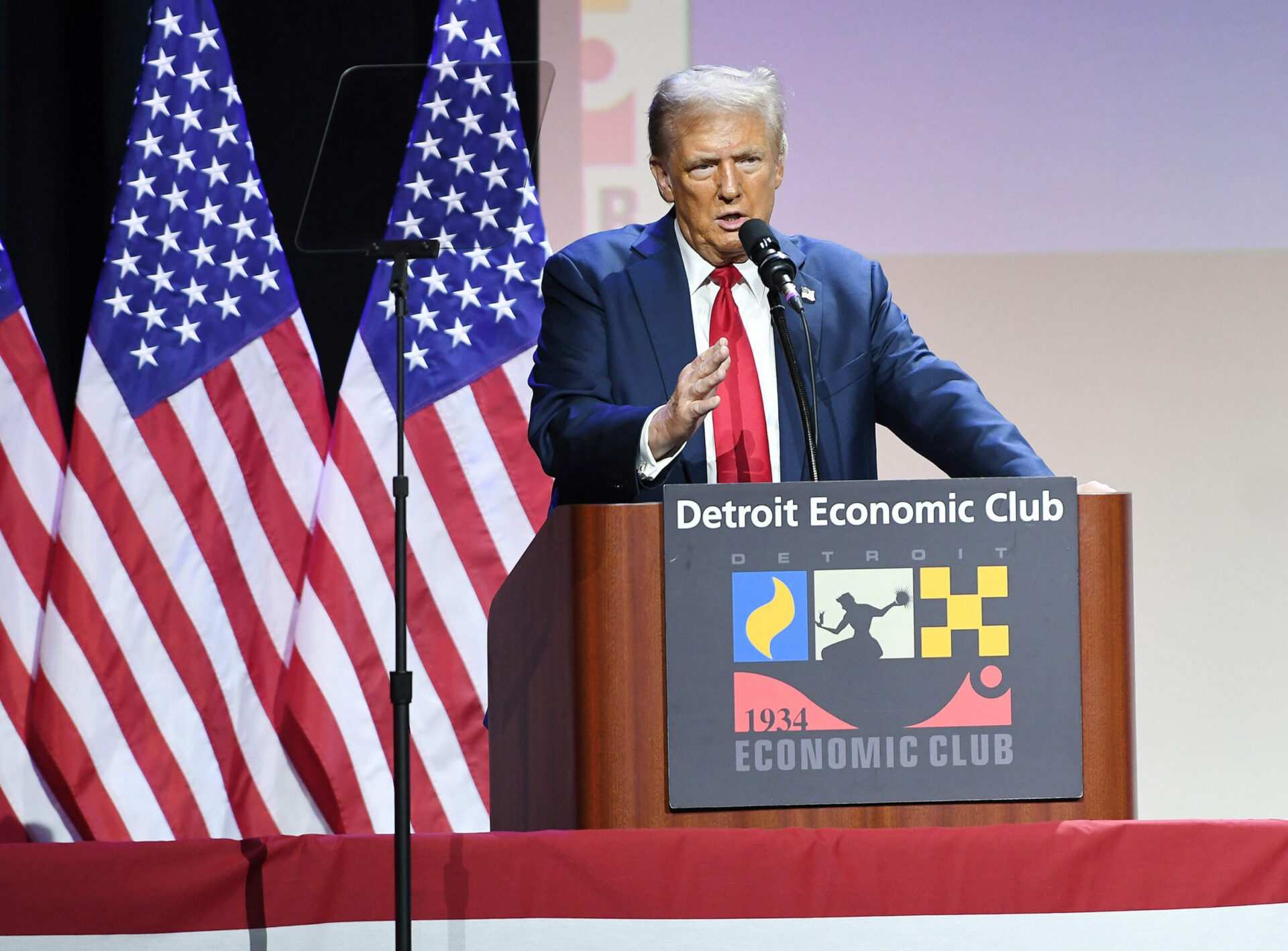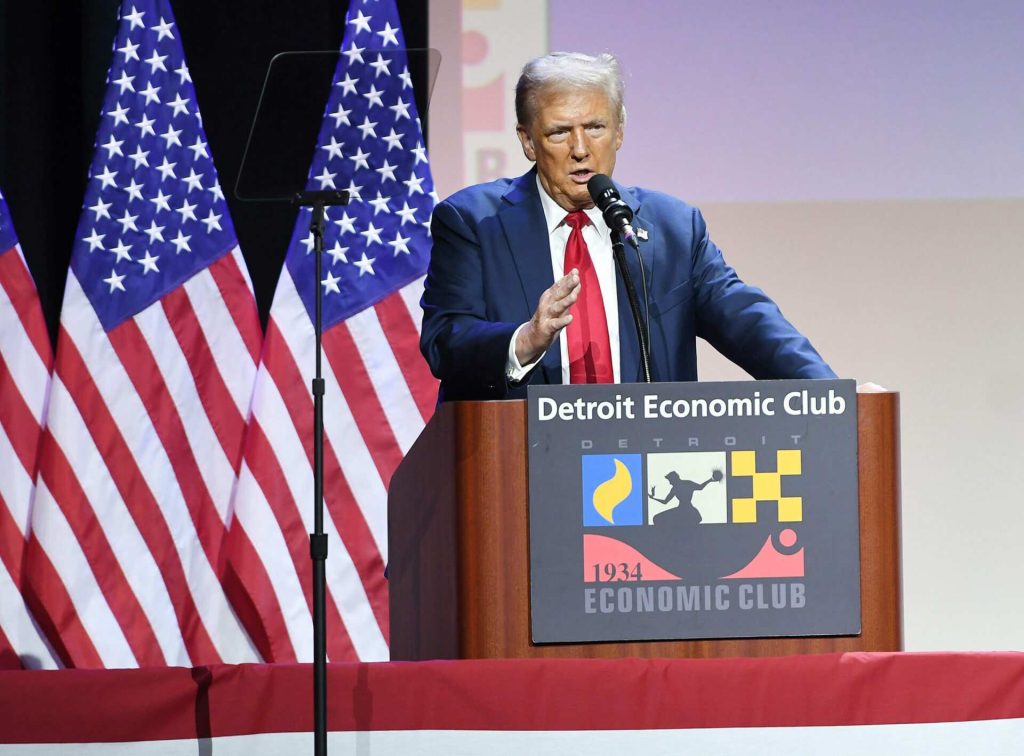
President-elect Donald Trump vowed additional tariffs on China as well as U.S. neighbors Canada and Mexico, providing a sharp counter to expectations that he might temper his trade policies during a second term.
Trump said he would impose additional 10% tariffs on goods from China and 25% tariffs on all products from Mexico and Canada in posts to his Truth Social network on Monday that sent the dollar higher and equities lower.
He cast the new levies as necessary to clamp down on migrants and illegal drugs flowing across borders. Trump accused China of failing to follow through on promises to institute the death penalty for traffickers of fentanyl, writing that “drugs are pouring into our Country, mostly through Mexico, at levels never seen before.”
“Until such time as they stop, we will be charging China an additional 10% Tariff, above any additional Tariffs, on all of their many products coming into the United States of America,” Trump said.
In another post, the incoming president also vowed to hit Mexico and Canada with a 25% tariff on “ALL products,” saying he would sign an executive order to that effect on his first day in office.
“As everyone is aware, thousands of people are pouring through Mexico and Canada, bringing Crime and Drugs at levels never seen before,” he said. “This Tariff will remain in effect until such time as Drugs, in particular Fentanyl, and all Illegal Aliens stop this Invasion of our Country!”
While public health experts say fentanyl overdoses remain a major issue, provisional data released earlier this month by the Centers for Disease Control and Prevention showed a 14% drop in drug overdose deaths from June 2023 to June 2024.
Trump’s tariff threats highlight how the incoming president seems set on using trade levies to implement his policy agenda, despite concerns from some business leaders about the impact. And it came just days after he tapped Scott Bessent to be the next secretary of the U.S. Treasury, a move that was seen as a promising sign for those seeking a more measured tariff stance.
The Canadian dollar fell to a four-year low on the news, while the peso traded close to its weakest since 2022. China’s yuan edged lower offshore.
Representatives for Canadian Finance Minister Chrystia Freeland and the Mexican Foreign Affairs Ministry and Economy Ministry didn’t immediately respond to requests to comment. Spokespeople for Trump didn’t immediately answer a question about whether there would be exemptions from the duties.
Trump campaigned on pledges to implement sweeping tariffs on allies and adversaries alike, vowing to hike tariffs to 60% for all goods imported from China and to 20% for those brought in from the rest of the world — policies he says will help pressure companies to re-shore manufacturing jobs in the U.S. and raise revenue for the federal government.
Ripple Effects
The Republican has long said he favors tariffs as a negotiating tool, even with U.S. partners, and during the presidential campaign in 2024, he mused about replacing the federal income tax with revenue from trade levies. Most mainstream economists though have warned that Trump’s levies would raise prices for consumers, fueling already high inflation and redirecting or reducing trade flows.
Higher North American tariffs would upend the auto industry and other consumer sectors, including food, in which the three countries are highly integrated.
A 25% tariff applied to all imports from Canada would put pressure on energy costs. Oil, gas and other energy products are Canada’s largest export to its southern neighbor; it’s by far the largest external supplier of crude to the U.S. Wilbur Ross, Trump’s former commerce secretary, said earlier this month it would make no sense to place tariffs on Canadian energy, because “all it would do would be to raise our costs and not help anything with more American jobs.”
The tariff would also do great damage to Mexico’s auto sector and to factories in central and northern states that export electronics, plastics and other manufactured goods to U.S. consumers. Trade between the two countries has grown in recent years, with Mexico turning into the United States’ largest trading partner. The Mexican government estimates there’s now $800 billion annually in total trade between the nations.
“Tariff talk raises global inflation fears, creates concerns around global growth and increases geopolitical uncertainty,” said Andrew Ticehurst, a senior rates strategist at Nomura Holdings Inc. in Sydney. “The knee-jerk reaction in markets is a stronger dollar, higher yields and weaker equities.”
The move on Mexico and Canada would reignite a trade feud that simmered across the continental bloc during Trump’s first term, where he forced a renegotiation of the North American Free Trade Agreement and imposed tariffs on certain sectors, including steel.
Currently, the re-branded trade pact, known as the United States-Mexico-Canada Agreement, allows for duty-free trade across a wide range of sectors. It’s not clear what recourse American importers, who would pay the duties, would have under the pact to head off any levy.
Economic Team
Beyond Bessent, Trump still has a number of top economic roles to fill in his administration. One of the chief architects of Trump’s tariff agenda, former U.S. Trade Representative Robert Lighthizer has yet to land a role in the second term.
Trump has also vowed to move quickly to secure the U.S. border — one of the top issues for voters in November’s presidential election — following a surge in migrants that taxed communities across the country and became a major political liability for President Joe Biden and Vice President Kamala Harris, the Democratic nominee.
The president-elect says he will carry out the largest mass deportation of undocumented migrants and finish building the wall on the U.S.-Mexico border that he started during his first administration. He has also confirmed his intention to use the U.S. military to carry out the deportations.
Trump’s team has been taking shape with him selecting South Dakota Gov. Kristi Noem to lead the Department of Homeland Security and Tom Homan, the former acting head of the U.S. Immigration and Customs Enforcement agency, to serve as his border czar.
___
© 2024 Bloomberg L.P
Distributed by Tribune Content Agency, LLC.








